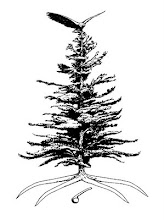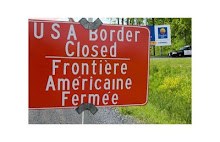Monday, April 7, 2014
Stirring the Ashes
One of the biggest challenges for any people is broad
participation in the issues that affect everyone. And when you stop and think
about it, there is very little from the smallest ripples in a family to major
calamities in a community that occurs without impacting others.
The notion of "mind your own business" or "let
someone else handle it" has become commonplace in many cultures. As we
observe the flaws of some of these other cultures and societies there are those
among us that would like to think the Haudenosaunee lived in a utopian society
where conflict and controversy could never find a home. We speak of "the
good mind" as though our ancestors never had bad thoughts.
Of course, this was not the case. And a proper inspection of
concepts captured in our language and our ceremonies make it clear that both
were developed to provide the necessary lessons to avoid repeating the mistakes
of those that came before us.
Their wisdom is demonstrated in the timeless metaphors drawn
upon generation after generation, not only without losing their meanings but also
actually gaining in significance as time goes on. "Fire" is an
example of this.
A fire in its most basic form serves as a symbol for family.
A fire provides warmth and protection. With its light wisdom and learning are
provided and the soothing, almost hypnotic effect of dancing flames and glowing
embers is something unmatched in nature.
But beyond the family, the fire represents a council. In
fact, the fire is a symbol for our right of assembly. We refer to our process
of deliberation as an issue being handed across and around the fire.
And while the fire and the tending of it is a significant
part of ceremony, council and the very foundation of our "Longhouse,"
there are some very basic concepts associated with fire that are either missed,
ignored or are interpreted far too narrowly.
Poets, songwriters, storytellers and holy men have crafted
messages and sermons with images evoked from "stirring the ashes."
But one of the most compelling and pragmatic cultural connections to this
expression is neither spiritual nor loaded with spooky connotations.
As it was explained to me, one of the concepts captured in
the act of stirring the ashes is specifically associated with inclusion and
encouraging participation. The very act of stirring ashes and poking around in
the almost dormant embers of a fire livens up those embers. By exposing them,
those not quite extinguished embers are made to glow with their own fire and
even those that seemed to have lost their fire can be re-ignited.
Many of our people are like those dormant or extinguished
embers. While the hot flames flash and dazzle with flamboyant energy, many
settle in to the quiet places allowing our fire to be fed primarily by the
hottest coals among us. By settling into the ashes, we preserve our thoughts
and opinions, protecting them from scrutiny. And in doing so we often believe
we retain the right to criticize quietly, away from direct engagement.
The concept of stirring the ashes gives energy and life to
those hiding from responsibility when their contribution to our fire is needed
most. Stirring the ashes lights those up that may feel neglected as well as
those that wish to be. It is a symbol for inclusion and participation. Yet as
much sense as the image makes in this application, it is not widely held or
shared.
I am extremely fortunate to have people around me that
continue to share and explain these things. And because of these special
relationships, my responsibility becomes to continue the conversations offered
to me and to encourage this very concept of inclusion and participation above
all else.
It is through these conversations that like-minded people
gather and those that are compelled to action can genuinely know that their
actions are either supported or condemned. We need not fear or ignore the
darkened embers. We need to stir the ashes to find the latent sparks among us.
There is no real consensus on any issue if the light of so many is left buried
in the ash.
In the same way that we remove the dust with a seagull wing
from the knowledge passed down from those that came before us, we stir the ashes
of our fire to remove this dust from the knowledge quietly held right beside
us.
For those of us strong in their — and our — convictions, we
should welcome those voices rarely heard. And if they challenge us, then such a
challenge should be seen as an opportunity to teach those who have not as yet been
engaged or to learn from those waiting to become engaged.
A bed of hot coals is a strong foundation for a fire just
waiting to flare. And that sea of glowing embers is far more powerful than any
single match, torch or beacon.
We need participation far more than we need leadership.
Strong leadership is only needed with weak-minded people.
The great men and women who came before us knew all this and
that is why concepts and expressions such as "removing the dust" and
"stirring the ashes" were specifically captured in our language and
incorporated in our stories and ceremonies. These are not phrases coined for
prayers to the sky world but rather concepts developed for teaching and
avoiding the mistakes common to the nature of man on Earth.
Subscribe to:
Post Comments (Atom)














![-[]-[]-/\-[]-[]-](https://blogger.googleusercontent.com/img/b/R29vZ2xl/AVvXsEjLoXmKO8PJVQ5pZ2q7GX7nFKw8H2tb28dxt-o10FUBNtOGszWhWoLB7tgjtMgtISpuSxNW3fcDxfuSS2DqojsdjNJ1lVggyUS374PnzsDbOhk4ukvtTunFQcyfkckZeBzcLbri4LDYN_E/s214/29-03-A-voice-from-the-Akw-.jpg)





No comments:
Post a Comment